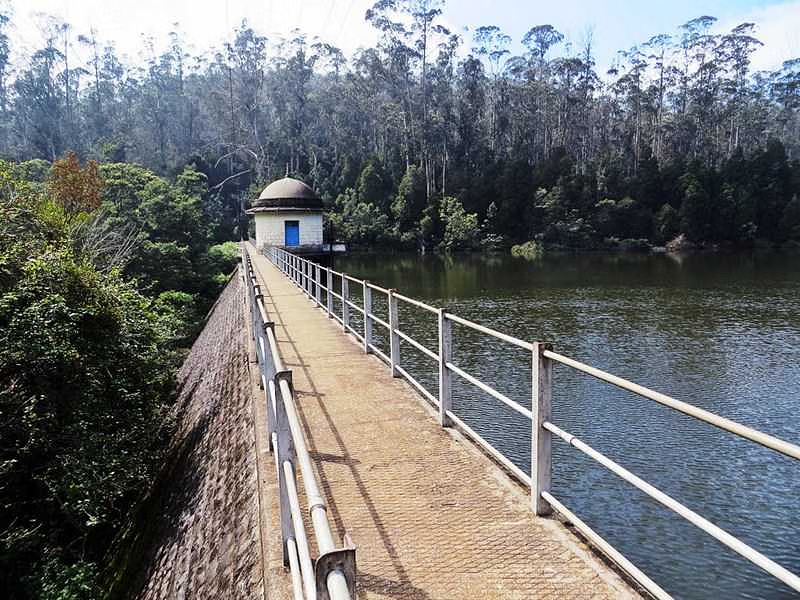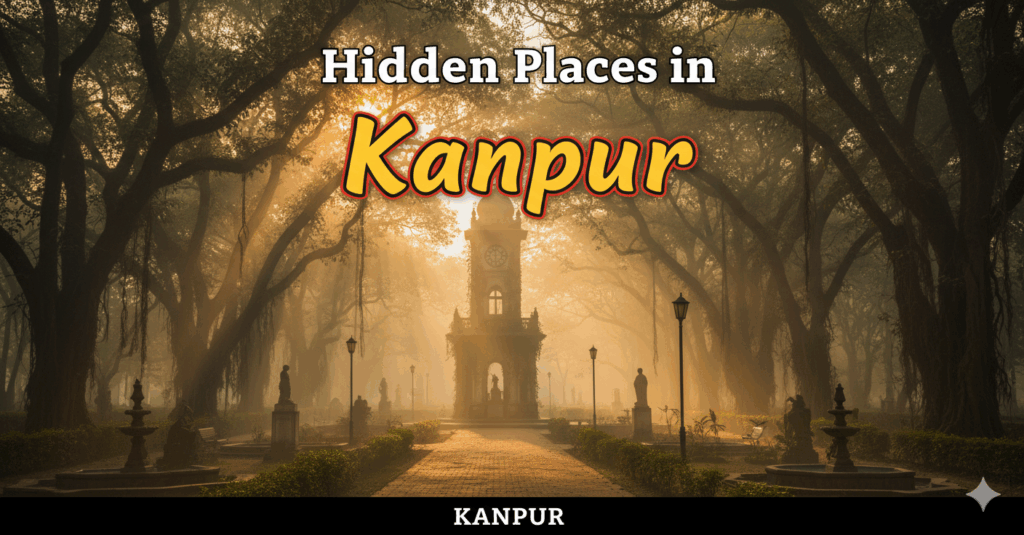Located on the sacred banks of the Narmada River in Madhya Pradesh, Omkareshwar stands as the fourth among the twelve revered Jyotirlingas of Lord Shiva, attracting millions of devotees annually. Understanding the best time to visit Omkareshwar becomes crucial for experiencing meaningful darshan, comfortable weather conditions, and participation in special festivals while avoiding extreme temperatures and monsoon challenges. Poor timing can result in uncomfortable pilgrimage experiences, limited temple access, or missing the profound spiritual energy that permeates this sacred site.
The temple’s unique location on Mandhata island, shaped like the sacred “Om” symbol by the natural division of the Narmada River, creates distinct seasonal patterns affecting accessibility and spiritual experiences. The importance of Omkareshwar temple extends beyond its Jyotirlinga status, encompassing rich architectural heritage, daily ritual cycles, and festivals that transform the island into a vibrant center of devotion.
Table of Contents
Quick Reference Guide: Optimal Omkareshwar Visit Times
| Category | Optimal Choice | Temperature | Festival Season | Best For |
|---|---|---|---|---|
| Best Season | Winter (Oct-Mar) | 15°C – 30°C | Major festivals | First-time pilgrims |
| Best Month | February-March | 18°C – 28°C | Pleasant weather | Extended stays |
| Festival Priority | Maha Shivaratri | 20°C – 30°C | High spiritual energy | Devotees seeking blessings |
| Avoid Period | Summer (Apr-Jun) | 35°C – 45°C | Extreme heat | Heat-sensitive travelers |
| Moderate Choice | Monsoon (Jul-Sep) | 25°C – 35°C | Lush surroundings | Nature lovers |
Understanding these patterns helps you navigate Omkareshwar’s sacred atmosphere while maximizing both spiritual fulfillment and physical comfort during your Jyotirlinga pilgrimage experience.
Seasonal Guide: Best Time to Visit Omkareshwar

Seasonal selection dramatically influences your Omkareshwar pilgrimage experience, affecting temple accessibility, spiritual atmosphere, and physical comfort levels. Understanding how weather interacts with religious observances helps pilgrims choose optimal timing that aligns with their spiritual objectives and physical capabilities.
Winter Season (October-March): Peak Pilgrimage Period
Winter represents the best time to visit Omkareshwar for most pilgrims seeking ideal conditions and meaningful spiritual experiences.
October-November:
- Temperature: 15°C to 28°C (perfect for temple visits)
- Weather: Pleasant days, cool evenings, minimal rainfall
- Festivals: Diwali celebrations and post-monsoon temple activities
- Pros: Comfortable visits, excellent for elderly pilgrims, clear Narmada views
- Ideal for: Family pilgrimages, photography enthusiasts
December-January:
- Temperature: 10°C to 25°C (coolest period with crisp mornings)
- Weather: Clear skies, minimal humidity, perfect visibility
- Crowd Levels: Moderate with focus on serious pilgrims
- Pros: Most comfortable weather, affordable accommodation
- Ideal for: Meditation retreats, budget-conscious pilgrims
February-March:
- Temperature: 18°C to 30°C (gradually warming)
- Festivals: Maha Shivaratri celebrations create peak spiritual energy
- Crowd Levels: Very high during Maha Shivaratri
- Pros: Perfect weather, major festival participation
- Ideal for: Festival enthusiasts, cultural immersion
Summer Season (April-June): Challenging Conditions
Summer brings significant challenges but offers opportunities for dedicated devotees.
April-June:
- Temperature: 30°C to 45°C (extreme heat)
- Crowd Levels: Significantly reduced due to heat
- Pros: Shorter darshan queues, budget accommodations
- Cons: Extreme heat stress, limited outdoor activities
- Suitable for: Heat-tolerant devotees, quick visits
Monsoon Season (July-September): Natural Beauty
Monsoon brings lush landscapes and spiritual significance with weather challenges.
July-September:
- Temperature: 22°C to 35°C (cooler due to rain)
- Weather: Heavy rainfall, high humidity
- Natural Beauty: Narmada at full flow, lush surroundings
- Pros: Dramatic beauty, cooler temperatures
- Best for: Nature lovers, flexible travelers
For similar sacred river experiences, Rishikesh tour packages offer comparable spiritual journeys with expertly planned timing.
Omkareshwar Timing and Daily Temple Schedule
Understanding omkareshwar timing helps pilgrims plan meaningful participation in the temple’s ancient ritual cycles. The temple follows a structured daily schedule with specific periods for different types of worship, darshan, and ceremonies.
Daily Temple Schedule and Ritual Timings
Complete Daily Worship Cycle:
| Time | Ritual/Activity | Description | Best For |
|---|---|---|---|
| 4:30 AM – 5:00 AM | Mangal Aarti & Bhog | Morning awakening ceremony with offerings | Early devotees, peaceful darshan |
| 5:00 AM – 12:20 PM | Mangal Darshan | Main morning worship period | General pilgrims, extended visits |
| 12:20 PM – 1:15 PM | Madhyanha Bhog | Afternoon offering and lunch for deity | Observing feeding rituals |
| 1:15 PM – 4:00 PM | Madhyanha Darshan | Afternoon worship period | Avoiding morning crowds |
| 4:00 PM – 4:30 PM | Sayamkalin Shringar | Evening decoration preparation | Cultural interest, photography |
| 4:30 PM – 8:30 PM | Shringar Darshan | Evening decorated darshan period | Most popular visiting time |
| 8:30 PM – 9:00 PM | Shringar Aarti | Main evening ceremony | Peak spiritual experience |
| 9:00 PM – 9:30 PM | Shayan Darshan | Final darshan before temple closure | Last opportunity visitors |
Important Timing Notes:
- Temple closure periods: Before 5:00 AM, after 9:30 PM, during aarti and shringar
- Special occasions: Darshan timings may vary during festivals and major celebrations
- Queue management: Arrive 30-45 minutes before preferred darshan periods
- Photography restrictions: Limited during aarti periods, always seek permission
Special Worship and Festival Timings
Understanding special observances and festival schedules helps pilgrims align visits with peak spiritual energy periods and authentic cultural celebrations.
Festivals – Monday Palki Procession:
- Timing: Every Monday throughout the day
- Special Feature: Golden palanquin with three-faced Omkareshwar murti
- Route: Riverbank worship followed by town procession
- Atmosphere: Drums, cymbals, devotional chanting “Om Shambhu Bhole Nath”
- Peak Season: Especially grand during Shravan month (July-August)
Festivals – Shravan Month Celebrations (July-August):
- Enhanced Atmosphere: Daily special celebrations and increased devotional fervor
- Extended Activities: Additional cultural programs and religious discourses
- Crowd Impact: Significantly higher pilgrim numbers, advance planning essential
- Spiritual Significance: Most auspicious period for Shiva worship and prayers
Festivals – Maha Shivaratri (February/March):
- Duration: All-night worship and celebration
- Special Activities: Continuous aarti, abhishek ceremonies, cultural programs
- Crowd Management: Massive pilgrim gathering requiring extensive preparation
- Spiritual Peak: Highest divine energy and blessing opportunities throughout year
Multiple Daily Worship Traditions
The temple’s unique governance structure creates rich worship diversity throughout each day.
Three Daily Ritual Cycles:
- Morning Prayer: Conducted by Temple Trust with traditional protocols
- Afternoon Prayer: Performed by Scindia family priests maintaining royal traditions
- Evening Prayer: Led by Holkar family priests preserving historical customs
This tri-partite worship system ensures continuous spiritual energy while maintaining historical connections to the region’s royal heritage and diverse devotional traditions.
How to Reach Omkareshwar Jyotirlinga

Understanding how to reach Omkareshwar Jyotirlinga helps pilgrims coordinate transportation with optimal visiting seasons and plan efficient journeys. The temple’s location 77 kilometers from Indore provides multiple access routes with different advantages based on seasonal conditions and travel preferences.
Transportation Options and Connectivity
Multiple transportation modes provide flexibility for reaching the sacred island, with seasonal considerations affecting route selection and travel comfort.
By Air – Devi Ahilyabai Holkar Airport, Indore:
- Distance: 77 kilometers (1.5-2 hours by road)
- Connectivity: Direct flights from Mumbai, Delhi, Bangalore, Hyderabad
- Cost Range: ₹1500-2500 taxi, ₹100-200 bus
- Best for: Time-constrained pilgrims, comfort seekers
Nearest Station to Omkareshwar Temple
Railway connectivity provides economical access with multiple route options.
Omkareshwar Road Railway Station:
- Distance: 12 kilometers (closest railway point)
- Connectivity: Direct trains from Mumbai, Delhi, Bhopal
- Journey Time: 20-30 minutes to temple
- Cost: ₹150-300 local transportation
Khandwa Junction (Alternative):
- Distance: 60 kilometers
- Advantages: Major junction with extensive networks
- Journey Time: 1.5-2 hours to temple
Indore Junction (Major Hub):
- Distance: 77 kilometers
- Benefits: Maximum connectivity, premium services
- Journey Time: 2-2.5 hours to temple
Road Transportation and Local Access
Road networks and local island transportation require understanding of seasonal conditions.
Highway Connectivity:
- NH-3 Route: Major highway with excellent connectivity
- Local Access: Bridge and ferry options to island temple
- Seasonal Conditions: Best during winter, challenging during monsoon
For comprehensive spiritual circuits, Kedarnath tour packages offer expertly coordinated mountain temple visits.
Importance of Omkareshwar Temple and Spiritual Significance

The importance of Omkareshwar temple extends far beyond its status as the fourth Jyotirlinga, encompassing profound mythological origins and continuous spiritual traditions. Understanding the temple’s sacred significance enhances pilgrimage experiences while providing context for optimal visiting timing.
Mythological Origins and Sacred History
Ancient scriptures establish the temple’s divine significance and explain the unique spiritual energy pilgrims experience.
Divine Manifestations: According to Puranas and Adi Shankaracharya’s verses, Vindhya Mountain performed intense penance worshipping a physical lingam. Lord Shiva appeared and blessed the mountain, manifesting as the Pranav Lingam. The divine power split into Omkareshwar (Jyotirlinga) and Mamleshwar (physical lingam). King Mandhata of Ikshvaku dynasty also meditated here, receiving Shiva’s blessing of eternal presence.
Sacred Geography:
- Om-Shaped Island: Natural Narmada division creates sacred Om formation
- Confluence Significance: Meeting waters create powerful spiritual energy
- Eternal Presence: Self-manifested (Swayambhu) Jyotirlinga
Architectural Marvel and Temple Structure
The temple’s distinctive design reflects centuries of architectural evolution while maintaining spiritual functionality.
North Indian Temple Architecture:
- Five-Floor Structure: Each level dedicated to different deities
- Sacred Levels: Omkareshwar, Mahakaleshwar, Siddhnath, Gupteshwar, flag-bearing deity
- Assembly Hall: 14 feet high space supported by 60 massive stone pillars
- Unique Orientation: Ancient sanctum faces north, newer construction faces south
Spiritual Importance Categories
Jyotirlinga Status:
- Fourth among Twelve: Specific position with unique spiritual attributes
- Moksha Granting: Liberation from cycle of birth and death
- Wish Fulfillment: Material and spiritual blessings
- Ancestral Prayers: Pitru paksha observances site
Regional Cultural Impact
- Pilgrimage Economy: Central role in regional spiritual tourism
- Cultural Preservation: Maintaining traditional worship practices
- Educational Role: Center for Shaivite philosophy
- Community Integration: Bringing diverse communities together
For comprehensive spiritual experiences, India tour packages offer expertly planned circuits including Omkareshwar.
Omkareshwar Tourism and Local Attractions
Omkareshwar tourism offers diverse experiences beyond the main temple, including natural beauty exploration and cultural heritage sites. The sacred island provides opportunities for nature photography, river activities, and interaction with local communities maintaining traditional lifestyles.
Island Exploration and Natural Attractions
The sacred Mandhata island offers diverse natural and spiritual experiences beyond the main temple complex, requiring seasonal timing for optimal exploration.
Mandhata Island Features:
The 4-kilometer long and 2-kilometer wide island offers multiple exploration opportunities beyond the main temple complex.
Natural Features – Mandhata Island Attractions:
- Om-Shaped Topography: Aerial or elevated views revealing the sacred Om formation
- Narmada River Banks: Multiple ghats for holy bathing and peaceful contemplation
- Scenic Walking Paths: Island circumambulation routes through varied landscapes
- Sunrise/Sunset Points: Elevated locations for spectacular river and temple photography
- Flora and Fauna: Island ecosystem supporting diverse plant life and river birds
Water Activities – Sacred River Experiences:
- Holy Bathing: Multiple ghats providing access for ritual purification
- Boat Services: River crossing and scenic tours available during appropriate seasons
- Water Offerings: Traditional practices of offering Narmada water to the lingam
- Parikrama by Water: Boat-based circumambulation during suitable weather conditions
Cultural Heritage and Archaeological Sites
Historical sites and cultural landmarks across the island provide deeper understanding of the region’s spiritual evolution and architectural heritage.
Historical Exploration Opportunities:
Beyond the main temple, the region offers multiple sites showcasing centuries of religious and cultural development.
Secondary Temples:
- Mamleshwar Temple: Housing the physical lingam complementing Omkareshwar Jyotirlinga
- Ancient Shrines: Smaller temples scattered across the island with historical significance
- Cave Temples: Natural rock formations converted into meditation and worship spaces
- Riverside Temples: Additional sacred structures along Narmada banks
Archaeological Interest:
- Stone Inscriptions: Ancient carvings providing historical context and dating
- Architectural Evolution: Examples of different construction periods and styles
- Cultural Artifacts: Museum collections and local heritage preservation efforts
- Traditional Crafts: Local artisans maintaining temple-related craft traditions
Omkareshwar National Park Integration
Regional natural reserves complement temple visits with biodiversity experiences, though seasonal accessibility varies significantly throughout the year.
While not directly connected to the temple complex, omkareshwar national park areas in the broader region provide nature tourism opportunities for extended stays.
Natural Reserve Features:
- Biodiversity: Central Indian flora and fauna conservation areas
- Wildlife Viewing: Opportunities for nature photography and wildlife observation
- Eco-Tourism: Sustainable tourism initiatives supporting conservation efforts
- Educational Programs: Nature awareness and environmental education opportunities
Seasonal Accessibility:
- Winter Months: Best for wildlife viewing and comfortable nature walks
- Post-Monsoon: Lush green landscapes and active wildlife behavior
- Summer Limitations: Reduced wildlife activity and challenging weather conditions
For nature enthusiasts combining spiritual and natural experiences, Mahabaleshwar tour packages offer similar combinations of temple visits with hill station natural beauty and seasonal accessibility.
Planning Your Omkareshwar Pilgrimage Experience

Comprehensive pilgrimage planning ensures you experience the best time to visit Omkareshwar while maximizing spiritual benefits. Strategic preparation addresses seasonal considerations, accommodation booking, and spiritual practice integration for meaningful experiences.
Accommodation and Stay Options
Strategic accommodation selection based on season, budget, and spiritual objectives significantly impacts pilgrimage comfort and temple participation.
Accommodation – Temple Trust Facilities:
- Dharamshala Options: Basic facilities with spiritual atmosphere (₹200-500/night)
- Guest House Rooms: Moderate comfort with temple proximity (₹800-1500/night)
- Advance Booking: Essential during festivals and winter peak season
Accommodation – Private Hotels and Resorts:
- Budget Hotels: Clean accommodations with basic amenities (₹600-1200/night)
- Mid-Range Properties: Comfortable rooms with modern facilities (₹1500-3000/night)
- Luxury Resorts: Premium accommodations with river views (₹3000-6000/night)
Pre-Visit Preparation and Planning
Thorough advance preparation addressing documentation, seasonal packing, and logistical arrangements ensures smooth pilgrimage execution.
Essential Preparation:
- Online Temple Services: Visit https://shriomkareshwar.org/OnlineTicketBooking.aspx for advance booking
- Transportation Confirmation: Railway tickets, flight bookings, local transport
- Seasonal Packing: Winter woolens, summer heat protection, monsoon waterproofs
- Travel Insurance: Medical coverage and trip modification protection
Spiritual Practice Integration
Coordinating personal spiritual practices with temple schedules enhances the depth and authenticity of your pilgrimage experience.
Daily Routine Integration:
- Early Morning Participation: Arrive for Mangal Aarti for peak spiritual energy
- Extended Darshan: Multiple daily visits during different aarti periods
- Parikrama Practice: Island circumambulation during comfortable weather
- Meditation Opportunities: Quiet spaces for personal spiritual practice
Traditional Observances:
- Fasting Practices: Monday fasts and festival-specific observances
- Offering Protocols: Traditional flowers, fruits, sacred water offerings
- Mantra Recitation: Om Namah Shivaya and Shaivite prayers
- Community Participation: Group prayers and cultural celebrations
Conclusion
The best time to visit Omkareshwar ultimately depends on balancing weather preferences, spiritual objectives, and crowd tolerance for optimal Jyotirlinga pilgrimage experiences. Winter months from October through March provide ideal conditions for most pilgrims, offering comfortable temperatures, clear weather, and opportunities for meaningful festival participation including the powerful Maha Shivaratri celebrations. Understanding omkareshwar timing for daily rituals ensures participation in authentic worship experiences, while appreciating the importance of Omkareshwar temple as the fourth Jyotirlinga enhances spiritual benefits and cultural understanding. Whether seeking the peaceful ambiance of winter visits or the intense devotional energy of festival periods, proper timing transforms your pilgrimage into a profound spiritual journey.
You can visit us at VDP Travels, Neighbourhood Complex, F- 5, near SBI Bank, Sector 4, Nerul, Navi Mumbai, Mumbai, Maharashtra 400706. For comprehensive Omkareshwar Jyotirlinga pilgrimage packages with optimal timing coordination, accommodation arrangements, and spiritual guidance, call +91 99675 18405, or visit https://vdp-travels.com.
Best Time to Visit Omkareshwar – FAQs
What is the best time to visit Omkareshwar?
October through March offers ideal conditions with pleasant temperatures (15-30°C), comfortable weather for temple visits, and major festival celebrations including Maha Shivaratri for enhanced spiritual experiences.
What are the Omkareshwar timing for daily darshan?
Temple opens 5:00 AM with Mangal Darshan until 12:20 PM, afternoon darshan 1:15-4:00 PM, and evening Shringar Darshan 4:30-8:30 PM. Main evening aarti occurs 8:30-9:00 PM daily.
What is the importance of Omkareshwar temple?
Omkareshwar is the fourth Jyotirlinga where Lord Shiva manifested as Pranav Lingam. The Om-shaped island, formed by Narmada River, holds immense spiritual significance for moksha and wish fulfillment.
How to reach Omkareshwar Jyotirlinga from major cities?
Fly to Indore Airport (77 km), take train to Omkareshwar Road Station (12 km), or travel by road via NH-3. Regular buses and taxis connect from Indore, Khandwa, and surrounding cities.
Which is the nearest station to Omkareshwar temple?
Omkareshwar Road Railway Station is closest at 12 km distance with direct trains from Mumbai, Delhi, Bhopal. Khandwa Junction (60 km) offers more train options as major railway hub.
What makes Omkareshwar tourism special?
Unique Om-shaped island, sacred Narmada River confluence, dual temples (Omkareshwar-Mamleshwar), rich North Indian architecture, daily ritual traditions, and peaceful spiritual atmosphere create exceptional pilgrimage experiences.
Is there an Omkareshwar National Park nearby?
Yes, the broader region includes protected natural areas with central Indian biodiversity, wildlife viewing opportunities, and eco-tourism initiatives, best visited during winter months for comfortable exploration.
What should I avoid during Omkareshwar visit?
Avoid summer months (April-June) due to extreme heat (35-45°C), monsoon season travel disruptions, and visiting during major festivals without advance booking due to massive crowds.
How long should I plan for Omkareshwar pilgrimage?
Plan minimum 2 days for temple visits, rituals, and island exploration. Extended 3-4 day stays allow participation in multiple aartis, parikrama, and cultural activities with relaxed pace.
Are there online booking facilities for Omkareshwar?
Yes, official online booking is available through https://shriomkareshwar.org/OnlineTicketBooking.aspx for accommodation, special darshan arrangements, and advance pilgrimage planning with confirmed services.





